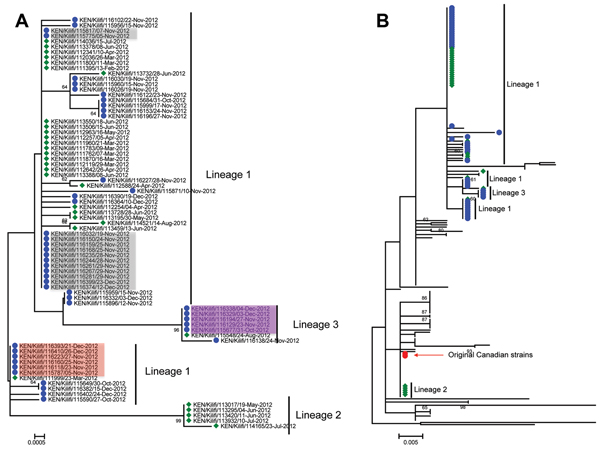Volume 20, Number 6—June 2014
Research
Rapid Spread and Diversification of Respiratory Syncytial Virus Genotype ON1, Kenya
Figure 2

Figure 2. Phylogeny of respiratory syncytial virus genotype ON1 viruses detected globally and from Kilifi, KenyaA) Maximum-likelihood, nucleotide-based phylogenetic tree showing the evolutionary relationships of the 77 Kilifi ON1 viruses across the sequenced portion (702 nt long) of the attachment (G) protein geneThe taxon nomenclature on the tree is as follows: A 3-letter code representing country of isolation/(location within country of isolation, if provided)/GenBank accession number (or identification for Kilifi sequences)/date of isolationKilifi viruses identified during the first infection wave are preceded by a green diamond; those identified during the second infection wave are preceded by a blue circleHighlighted names (i.e., red, gray, and purple, indicating viruses by taxa) had sequences identical to those for viruses from the first ON1 infection waveB) Maximum-likelihood, nucleotide-based phylogenetic tree showing the evolutionary backbone structure of 118 global ON1 viruses sequences, together with the 77 Kilifi ON1 viruses sequences across the sequenced portion (333 nt long) of the G third C-terminus regionThe positions of the Kilifi viruses from the first infection wave are indicated by a green diamond, those from the second wave are indicated by a blue circle; the red circle indicates the position of the original Canadian ON1 virusesOn both trees, only bootstrap support values >60 are shown on the branchesScale bars indicate nucleotide substitutions per site.